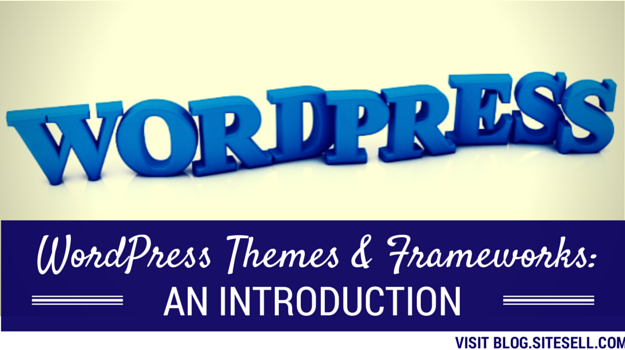Choosing a theme for your site is fairly straightforward, if you’re aware of a few things. This article discusses how to make choosing and customizing your theme as simple as possible.
Choosing Your Theme
Be informed before diving into the deep end of theme research. Especially important is knowing the difference between free and premium, and what frameworks are.
Themes Included With WordPress
WordPress comes with a set of default themes (2011, 2012 and 2013), free. If you like coding in CSS and PHP, then one of these themes may be okay for you.
Free Themes
There are literally thousands of free themes that you can choose from. They range from stunning to so-so, in all sorts of column variations (2 or 3 columns, sidebar on the left, or right, or one on both sides, or both on the left or right), and in hundreds of colors.
You might find exactly the right theme for your niche. But before you install it, be aware that many free themes require that you have a link back to the designer’s site at the bottom of the theme (the link is built in by the designer). That means that every page, every post, every archive page, and every category page would have a link back. Google has a dim view of this type of linking, so your site could take a hit if you use a free theme with global links back to the designer.
And most free themes don’t work with frameworks (discussed below), so you would be doing most of the customization with CSS and PHP, as you would with the themes included with WordPress.
Another issue with free themes is the possibility of malware or hidden text being added to the code. Neither is common, but there is the risk. Malware can keep your site out of the engines. At a minimum, Google will stick a warning between its search results page and your page, stating that your site is a potential risk. Hidden text will usually cause a penalty, dropping your site in the rankings, or even removing it from the results altogether.
This hidden text is usually a link back to the theme designer’s site, although it could also be a link to a third-party site. You won’t see the link if you look at a page or post, because the text color is the same as the background color. The only way you would ever find it would be to examine the HTML code and the CSS code of a post and a page very closely.
As noted above, neither of these is a common occurrence in free themes, but caution and some research are needed before choosing any free theme.
Premium (Purchased) ThemesThemes that you pay for are called premium themes. These themes are usually designed by a large design agency or a reputable solo designer.
Many premium themes are sold by or come as part of a package from a WordPress framework provider (discussed below).
Many have customization tools, others don’t. Before you buy a premium theme, check that it has customization tools that you can use.
Whether you buy a premium theme, or one that comes with a framework, one thing you’ll receive is a child theme. The child is a basically a CSS file that you can customize. The child may also have a functions.php file, which allows you to include some custom functions on top of the parent theme.
You upload both the parent and child themes, but customize only the child’s CSS file, leaving the parent as is. The purpose of this? If the theme ever has to be updated (ex., to be compatible with a new version of WordPress), the parent’s site files (PHP and HTML) are updated. Your child theme is unaffected by the parent’s update.
One option you can use if you find a premium theme with minimal customization tools is the Elegant Themes Drag and Drop Build Plugin. It creates a drag-and-drop system that allows you to quickly design your site.
Theme Frameworks
By now you’re probably wondering what a framework is, and why you should bother with one. Using a framework means that you don’t need to use or know PHP and CSS. Changes to your site’s design are done with add-on tools right inside WordPress itself. But that’s something many premium themes offer. So what makes them different?
A framework usually has a variety of template styles (business, gallery, personal, etc.) that all work the same way, with the same set of customization tools. So once you learn how to customize one template, you know just about everything you need to know to customize any other template offered for sale with the framework.
Depending on the framework, you may also find independent designers with child themes designed for that specific theme. This can reduce the time you spend customizing the theme while allowing you to use the framework’s tools.
Typically, you buy a template from the framework provider, and the framework is included in the price. Some framework providers offer a deal, where you can buy every template they’ve created, and all future templates, for a substantial discount over the per-template price.
If you think you might want to have multiple WordPress-based sites or become a WordPress-based web developer, buying the set might become a good deal for you. Note, however, that the price is usually several hundred dollars to buy all the templates.
A framework usually throws in a few bonuses, such as some search engine optimization tools for the home page and possibly the other pages of the site. Most also give you access to the head section, so that you can add site ownership verification meta tags, Google Analytics tracking code, and anything else you’ll need in the head.
Most also offer shortcodes, tags that you can add to your posts and pages to add buttons, callout boxes, etc., without having to do any HTML or other coding.
Another bonus with some frameworks is security. Most have beefed-up security features that help keep your site safe from hackers. Some may even have optimization features.
Want to get more WordPress and online business building tips delivered to your inbox? Subscribe to the SiteSell Newsletter! You can also join our SiteSell community and discuss WordPress themes, plugins, monetization strategies, and more.


Latest posts by SiteSell (see all)
- You’ve Written an Ebook – Now What? - August 17, 2015
- The Only Five Ways to Monetize Your Audience (Plus One Armageddon Option) - August 7, 2015
- Why Publish on Kindle? - June 19, 2015



